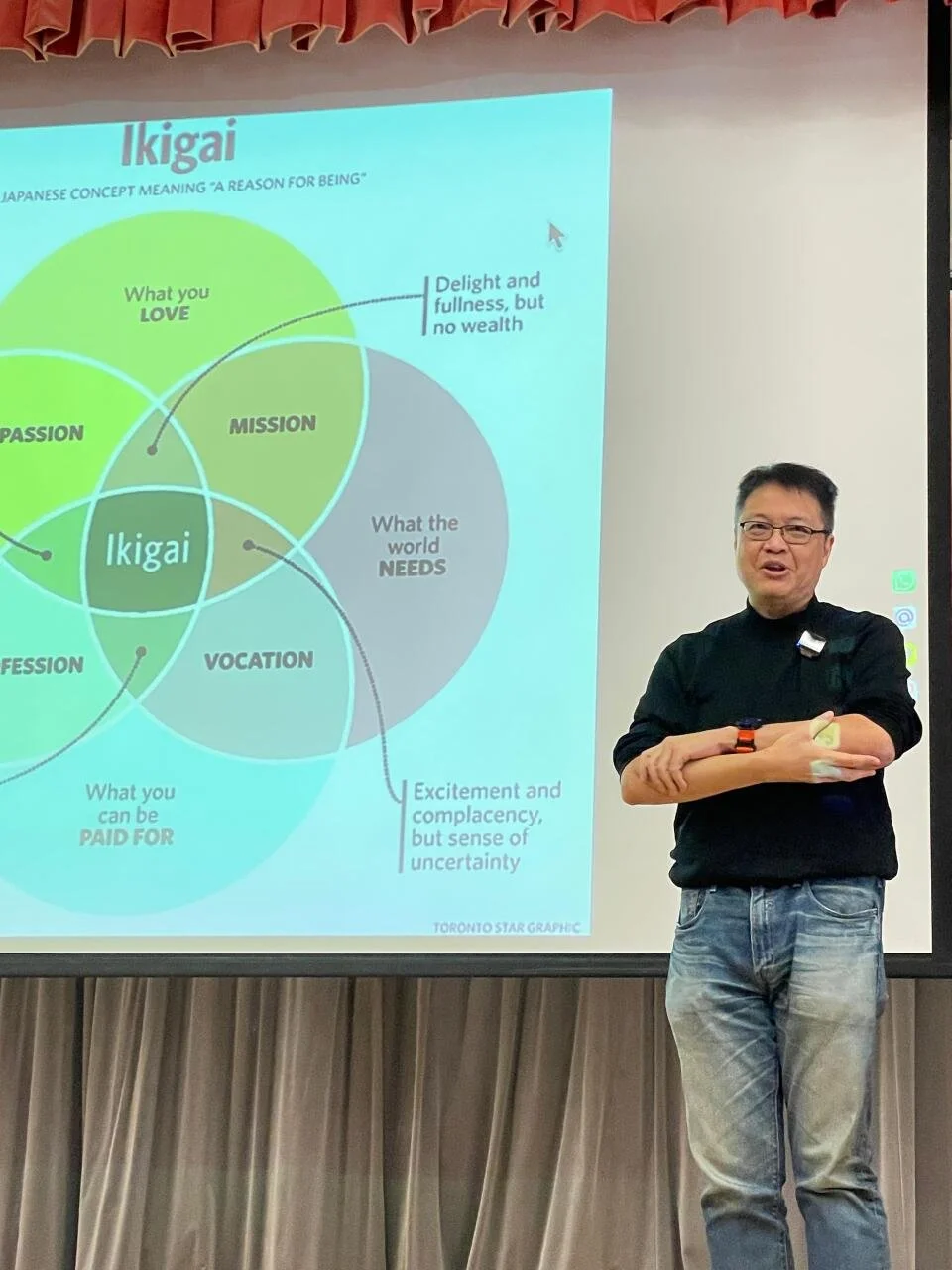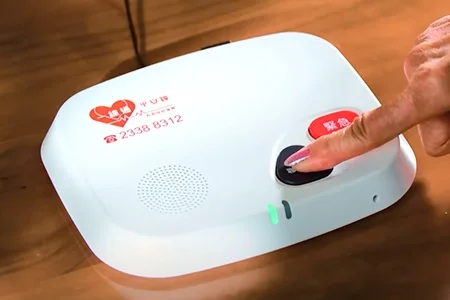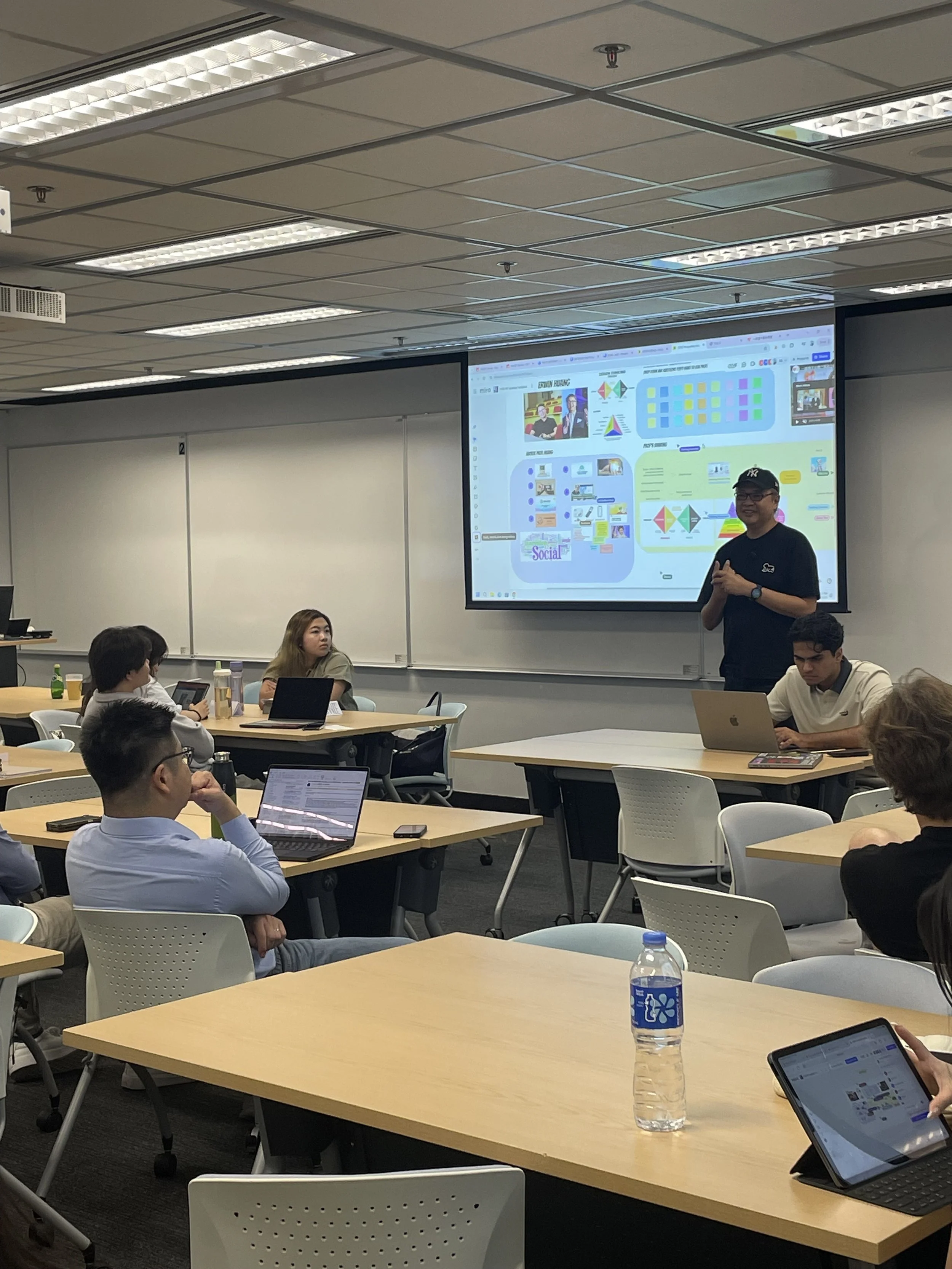Speaker Session: Prof. Erwin Huang
Professor Erwin Huang is an entrepreneur, investor, adjunct professor at the Hong Kong University of Science and Technology (HKUST), and a prominent figure in both social innovations and eLearning. In this speaker session, Professor Huang speaks about his role as a founder in developing Safety Bell (平安鐘) for the elderly – a Personal Emergency Link Service developed in collaboration with Senior Citizen Home Safety Association (長者安居協會) and CSL (香港移動通訊有限公司).
What is the Safety Bell?
The Safety Bell was first created in 1996, translating literally as the "peace bell." Over the years, various models of the product have been developed, some of which are mobile and equipped with sensors. Additionally, there is a fully operational call center with 120 seats, typically staffed by 60 operators. When a user presses the button on the Safety Bell, they connect with call center staff who are ready to assist.
This system is designed primarily to support the elderly, particularly those living alone. In moments when they do not feel well at home, they can activate the device to request help. The call center also conducts wellness checks by reaching out to users. The button can take various forms, including a wearable device, a watch, or a mobile application. When pressed, the system facilitates access to emergency services, especially in situations like slips in the bathroom.
Elderly users can receive assistance by simply pressing the button, which routes to the call center. The system is pre-loaded with relevant information, such as the user’s medical history and background, allowing call center employees to provide adequate assistance. Furthermore, calls can also be routed to family members.
The system is designed to ensure that the elderly receive assistance within 20 seconds of pressing the button, whether that involves contacting emergency services or reaching out to family members. Emergency services are committed to arriving at the scene within 20 minutes. The system can contact multiple emergency services simultaneously to minimize wait times and can share crucial information about the user’s needs, such as allergies and medical history, prior to their arrival at the hospital. This service is available to elderly individuals across Hong Kong for HKD$100, making it a scalable operation.
Initially, there was competition from other companies to implement this idea, but ultimately, the Safety Bell emerged as the trusted product in Hong Kong, receiving recommendations from doctors. To date, it has served over 100,000 elderly individuals and has evolved beyond its original button design.
Origins of the Safety Bell
The idea for developing the Safety Bell originated during a cold snap in the winter of 1996, when it was reported that 27 elderly individuals died alone without anyone being aware. These individuals typically frequented a specific location for breakfast but failed to show up for 15 days, prompting concern from the community. Friends and advocates, including a radio show host, recognized the need for action and attempted to engage the government, but faced bureaucratic challenges.
A contact working in social development suggested the need for a service to aid these vulnerable individuals. Although there was a consensus on the necessity of a solution, the government required a decade to implement any initiative. Consequently, the idea emerged to establish a service that was both commercially viable and socially beneficial. Inspired by the concept of "Social Entrepreneurship" from a book by Peter Drucker, the founders aimed to create a service that not only generated profit but also provided significant social value, ultimately leading to the establishment of a social enterprise focused on helping the elderly.
Balancing Privacy and Efficacy
Privacy concerns are paramount, especially considering that Hong Kong's privacy laws were enacted in 2000, four years after the Safety Bell was developed. At that time, the organization had access to health records and other sensitive data. The central question became whether privacy is more important than life itself. In response, the organization helped shape Hong Kong's privacy law, opting to disclose information only when absolutely necessary and ensuring that consent is obtained for capturing private data.
If a user is unresponsive or shows concerning signs, the system can access medical records, with registered nurses on staff to manage these situations in accordance with local laws.
Marketing Strategy
As a non-governmental organization (NGO), the Safety Bell emphasizes the importance of building a strong brand without excessive marketing expenditures. Instead, it focuses on collaboration with various stakeholders, including other NGOs, government agencies, hospitals, doctors, and nursing associations. This approach has facilitated word-of-mouth promotion and highlighted successful case outcomes.
Professor Erwin Huang speaking to students about the Safety Bell
Future Evolution of the Safety Bell
The future evolution of the Safety Bell is a pertinent topic, especially as it approaches its 30th anniversary. While the fundamental desire for peace and safety remains constant, the concepts surrounding these ideas have shifted over time. Users' beliefs and available data will continue to evolve, potentially allowing the Safety Bell to incorporate preventive care measures, such as predicting falls or assessing mental well-being through artificial intelligence. Although many changes can be anticipated, the core aspiration for safety and peace will undoubtedly persist.


